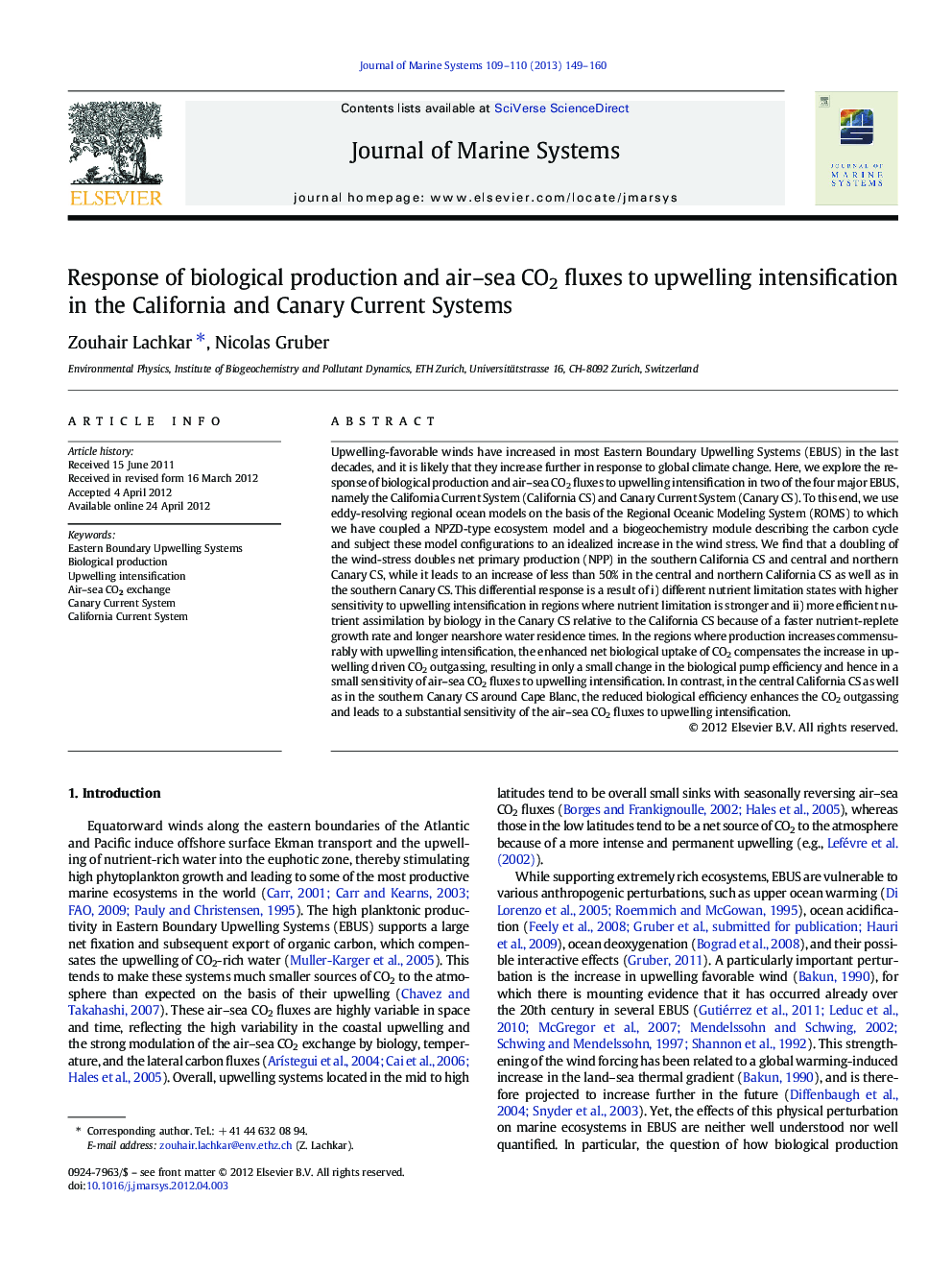| کد مقاله | کد نشریه | سال انتشار | مقاله انگلیسی | نسخه تمام متن |
|---|---|---|---|---|
| 4548160 | 1627312 | 2013 | 12 صفحه PDF | دانلود رایگان |

Upwelling-favorable winds have increased in most Eastern Boundary Upwelling Systems (EBUS) in the last decades, and it is likely that they increase further in response to global climate change. Here, we explore the response of biological production and air–sea CO2 fluxes to upwelling intensification in two of the four major EBUS, namely the California Current System (California CS) and Canary Current System (Canary CS). To this end, we use eddy-resolving regional ocean models on the basis of the Regional Oceanic Modeling System (ROMS) to which we have coupled a NPZD-type ecosystem model and a biogeochemistry module describing the carbon cycle and subject these model configurations to an idealized increase in the wind stress. We find that a doubling of the wind-stress doubles net primary production (NPP) in the southern California CS and central and northern Canary CS, while it leads to an increase of less than 50% in the central and northern California CS as well as in the southern Canary CS. This differential response is a result of i) different nutrient limitation states with higher sensitivity to upwelling intensification in regions where nutrient limitation is stronger and ii) more efficient nutrient assimilation by biology in the Canary CS relative to the California CS because of a faster nutrient-replete growth rate and longer nearshore water residence times. In the regions where production increases commensurably with upwelling intensification, the enhanced net biological uptake of CO2 compensates the increase in upwelling driven CO2 outgassing, resulting in only a small change in the biological pump efficiency and hence in a small sensitivity of air–sea CO2 fluxes to upwelling intensification. In contrast, in the central California CS as well as in the southern Canary CS around Cape Blanc, the reduced biological efficiency enhances the CO2 outgassing and leads to a substantial sensitivity of the air–sea CO2 fluxes to upwelling intensification.
Journal: Journal of Marine Systems - Volumes 109–110, January 2013, Pages 149–160